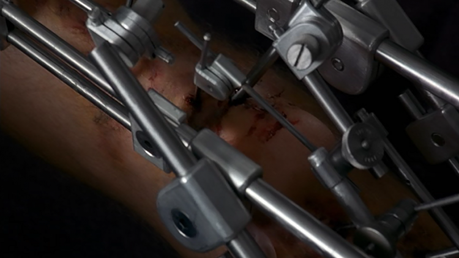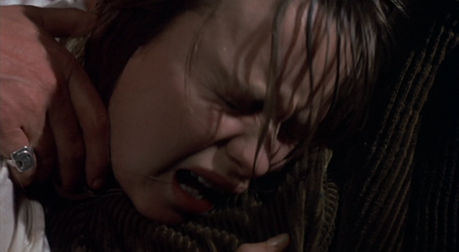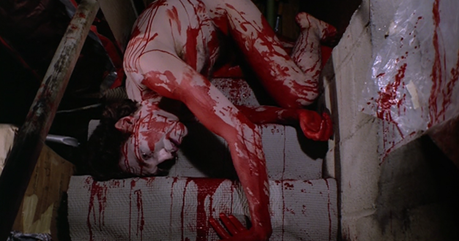“They feel betrayed, and tricked, and deceived, and caught in something ugly … I was very happy with the movie, and I knew that it was the way that it should be, and that it had to be like that, and whatever was going to happen would happen.” — David Cronenberg, on Crash (1996) and its detractors
People, most often in my immediate family, regularly ask for an explanation of my taste in disturbing movies. As in a, “What did we do wrong that makes you like this stuff?” kind of way, both worried and confused, looking for some logical explanation for the gamut ranging from I Spit on Your Grave to Natural Born Killers. While I’m quick to point out that my favorite film is actually Iron Man (2008), I’ll somewhat sheepishly allow that, okay, a close second is Videodrome and a close third is Antichrist. While I don’t necessarily understand the concern over my viewing habits (I didn’t exactly fly into Ted Turner’s feared road rage after seeing Crash, either), I admit it is somewhat odd that human beings, a lot of them, seek out disturbing imagery to implant into their subconscious. For fun. And while I do it and have turned it into a sort of hobby (thus this brainchild website you’re browsing now, which leads me to believe you do it too) I haven’t the slightest idea why.
I was asked once by my mother whether there was a psycho-sexual element going on in my viewing habits. It’s not difficult to see where this concern originates. Pull just about any “controversial” or “dangerous” film list and it’s tough to ignore the psycho-sexual element that elicits disgust in some and stimulation (intellectual or otherwise) for others. Blue Velvet, Body Double, A Clockwork Orange, Kids, Lolita— the list could literally go on into triple digits. From something as innocent and innocuous as The Kiss (1896) to last year’s notorious A Serbian Film (2010), there’s something, clearly, about unusual or threatening human sexuality that is all at once cathartic to witness and impossible to ignore. It’s a quick way to rile people up, to enrage the censors. I’m not getting my kicks from these films, but society’s fear is that a hell of a lot of people are.

Crash (1996)
So what are the characteristics of a person who views, and actually enjoys, films that actively seek to disturb? I’m not simply talking about horror films here, whose surface-level thrills are well-documented, all-American enjoyment for most people. It’s fun to jump at a shock from a safe distance, to get the blood pumping knowing that you’re just playing a sly trick on the brain. But what about those films with imagery that is truly upsetting? Who actually wants to watch a man’s head split open in a mass of tumors? This is precisely what I subject myself to every time I watch Videodrome.
How about rape? Who really likes watching extended rape sequences (besides the disturbingly high population of young women I know with misguided rape fantasies)? Yet a tradition as storied as Ingmar Bergman’s The Virgin Spring (1960) to Peckinpah’s Straw Dogs (1971) to the very modern Irreversible (2002) are built upon the foundation of rape.

Straw Dogs (1971)
It’s long been my belief that I handle these images well because I intellectualize them; I am able to somehow separate what I see on the screen from its true emotional reality. Rape is a devastating, almost unimaginable pain, but on the screen it becomes part of a film tradition, a sub-genre that says something upsetting, but nonetheless abstractly and distinctly intellectual, about our society. How is it I’m able distance myself like that, while other people simply cannot? I suppose one logical conclusion is that I’ve never been raped, but surely not everyone who finds those types of films upsetting has. Like most women, I have friends who have been raped, I love many of them dearly, and I’m aware of the emotional pain and devastation it elicits. I’m not naïve. When I watch these films I’m not thinking of the actuality of real, physical rape, but instead the abstract concept it represents. Why?

Blue Velvet (1986)
I’m not smarter than people who don’t watch disturbing movies. Far from it. Nor do I think intelligence really plays any role at all. Some of the most brilliant minds I’ve ever known, my mother among them, can’t stand the most extreme episodes of South Park, let alone the raw, primal horror of Lars von Trier. Nor do I think I’m more mentally stable than people who are emotionally ravaged by these films. I have my own demons– I’ve battled chronic anxiety for as long as I can remember– so it cannot be that I’m simply just so happy and levelheaded that I can “take it”.
How about the idea that I just love movies more? That I must understand something and appreciate something about cinema in order to trust a director enough to accept the disturbing images presented. No, sorry, this one falls apart, too. Even Roger Ebert couldn’t bear to sit through Blue Velvet, and the guy is a walking encyclopedia of film. And a good deal of the attendees of the 1996 Cannes film festival, who clearly really loved film because they dropped the serious cash it takes to attend the goddamn Cannes film festival, still walked out of David Cronenberg’s Crash in disgust. Did they just not ‘get’ film well enough?

I Spit On Your Grave (1978)
Perhaps I’m asking the wrong questions. Maybe this is all biased already towards the inclination that disturbing films are worth viewing, and maybe even more worthwhile for their difficulty. Maybe instead of asking what I “have” that other people don’t, I should worry about what I lack.

